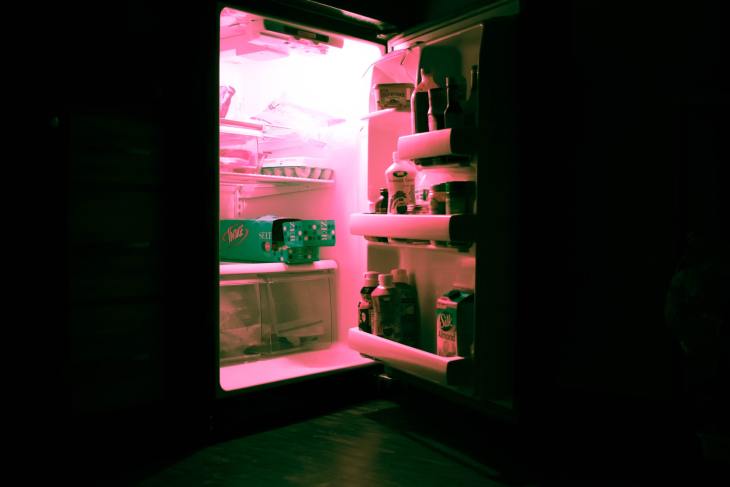Building up frost is a common problem in our home refrigerator. In time this can become very frustrating. You open your fridge and see the inside space is narrowed up by all the frost there. Reaching out for the frozen items is also challenging when ice builds up.
First, let’s talk about how your fridge works.
The refrigerator works by taking in cold air and pushing out warm air. This process takes place inside of a sealed container, which is commonly referred to as a refrigerator.
What Causes Frosting in Your Refrigerator?
Frost in the refrigerator is usually a thin layer of ice that accumulates on the shelves and walls of the appliance. It is caused by a chemical reaction between certain foods and gases released from them.
A few reasons why frost happens:-
- The frost is usually produced when moisture-rich food items are stored in a cool environment. This can include milk, yogurt, bread, eggs, cheese, and produce. A common gas that causes frosting is ethylene gas which originates from apples, bananas, and other fruits. The gas mixes with the moist surface to create this icy layer on the interior surfaces of your fridge.
- Sometimes, too much air gets into your freezer compartment. If you open the freezer too frequently to take food out, that might have let in more air than usual. It can accumulate more air condensation than usual.
- The freezer door is not sealed correctly. The door should stay firmly shut during the freezing process.
- The temperature setting of the refrigerator is not correct for your region.
- Many people are under the impression that putting hot foods in the freezer will keep them tasting fresh and delicious. This is not true; it adds up more water vapor inside.
When you put a piece of food originally at a high temperature into a fridge or freezer (which has been at a low temperature), there is an abrupt change in temperature that can result in ice crystals forming on its surface. This effect is most common with meat, poultry, and fish. This will build up frost inside the wall of the fridge cabinet.
Also, frost can happen in your fridge because the temperature is too cold and it has been sitting idle for too long. While ice does not impact the safety of the food, it can cause a decrease in food quality.

Fix Frosting Problem with a Few Simple Solutions:-
01. Clean your condenser coils and defrost your freezer coils (inside and out)
Condenser coils are made of metal and heat up when the AC system is running. Over time, they collect dust and dirt, which reduce their ability to release heat. Defrosting your freezer coils will help keep it cool and prevent ice build-up.
To clean your condenser coils, you need to remove the front grill or panel covering the unit to access them. The coil fins are usually located at the back of the AC unit and not on top of it like you would expect.
To clean your condenser coils, use rubbing alcohol or a product meant for cleaning coils. Then, spray compressed air onto them from a can or a canister vacuum cleaner with an attachment nozzle. Don’t forget to also clean fans, gills, fins, pipes, and registers that vent.
02. Turn down the temperature on your fridge to make it colder inside and prevent ice from forming as quickly.
By turning down the temperature on your fridge, you can keep it from forming ice inside.
Super cool! You may be wondering why your fridge isn’t as cold as it used to be. That’s because when you turn down the temperature on your fridge, the coils inside become colder and don’t ice up. That means that your food stays fresh much longer!
03. Take out any humidity sources like fruits, bread, vegetables, or anything else that can often grow mold or fungus that’s making your fridge warmer than usual.
To prevent vegetables, fruits, and bread from drying out and adding condensation, keep them in zip lock bags inside the refrigerator.
This is true for any food item you put inside the fridge. The rule is you need to keep everything sealed in a container or zip lock bag before you put them in the refrigerator. This way, no vapor will add up inside the freezing chamber. The less water condensed inside, the better it will cool without frosting.
04. Don’t keep your fridge empty or too full
An empty fridge means there is more air inside when you open the door. It can build up condensation quickly with the contact of warm air. When your fridge is full, there will be less air to make water condensate.
Also, do not stock food to block the cold airflow in the back and side vent. A blocked vent will cause ice to form quickly.
Even after taking all the preventative measures, ice might build-up, and you need to clean up the ice. Turn off the refrigerator and take down all the food items somewhere else. Keep the door open for as long as the ice doesn’t melt fully.
Use warm water and a plastic spatula to clear the ice. You can use warm water and a towel too. Clean the rubber padding of the refrigerator door with warm water. This might help with the sealing incorrectly.
Above all, if nothing works, you need to send the unit for service.
Tip: Modern refrigerators have the defrost functionality built-in. After a specific time, the unit changes the temperature automatically to defrost the inside chamber. You might want to check some of these refrigerators.





